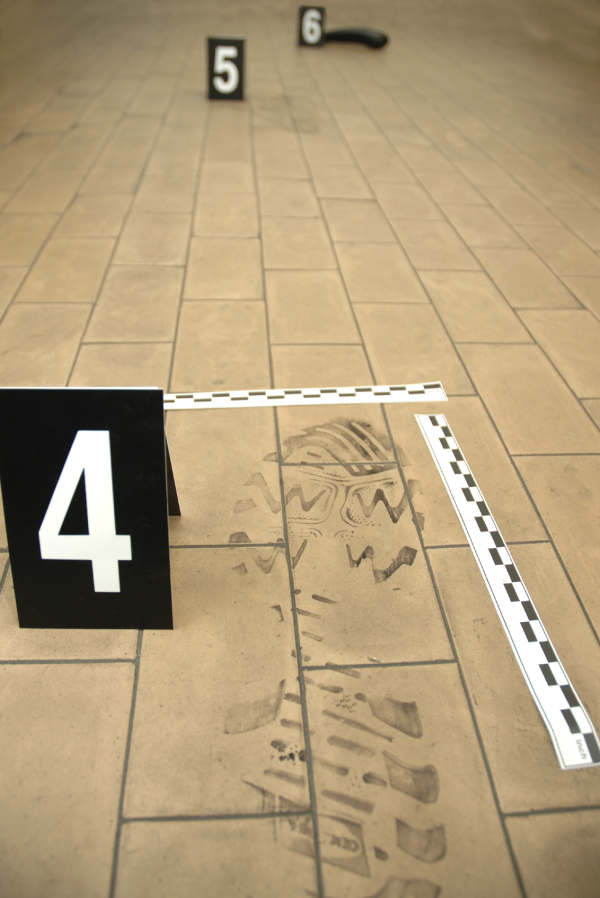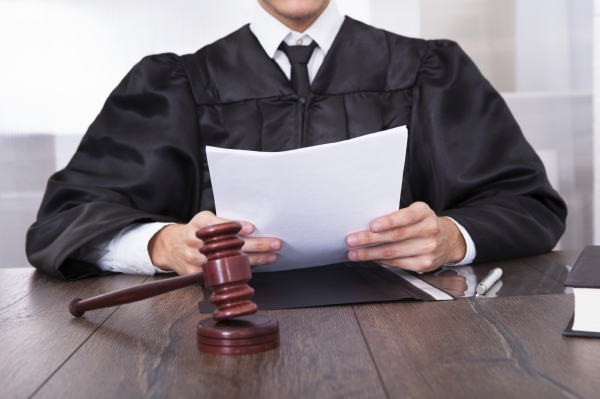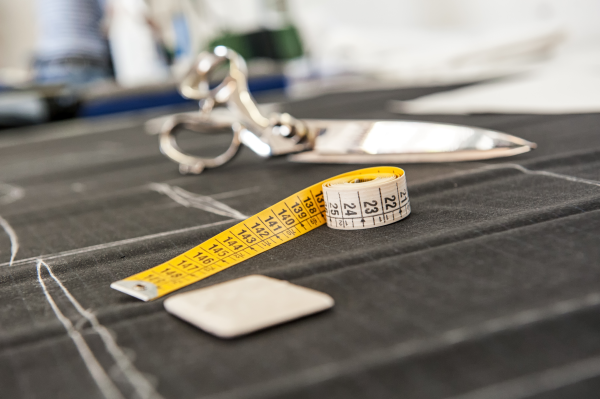
 |
The expectations for an IME report should start with and be based on the objective evidence presented to the expert and the reasonable inferences that can be drawn from that evidence. Without an accurate accounting of the evidence, it is impossible to state with any degree of reliability if the expert’s conclusions are reasonable. This is equally true of favorable and unfavorable reports. For example, if we were unaware that the examinee had a non-industrial injury treated with a meniscectomy, then we would not have any reason to question the expert’s conclusion that the examinee’s total knee replacement related to his work as an electrician.
In any claim there are a limited number of reasonable conclusions that can be drawn from the available evidence. Knowing the claim in depth will ensure that the reader will be able to assess whether the expert’s opinion, favorable or not, is at least reasonable under the circumstances. We may not know exactly what the expert will say but we should be able to figure out the range of possible reasonable responses and how likely each reasonable response is.
To determine the range of conceivable responses, the reader should do his best to remove emotion from the analysis and refrain from making subjective credibility judgments. The first step is to set out the objective evidence. Once the assumptions are drawn out, the reader should analyze how well-supported each is. Then it can be determined how likely each conclusion is to be drawn among the competing inferences. For example, an expert is likely to find a rotator cuff tear to be work related in an examinee who is a painter and performs a significant amount of overhead work. However, if we also know that the examinee is a former college and minor league pitcher who stopped playing baseball near in time to his first medical treatment, we may conclude that it is at least as likely that the expert will attribute the rotator cuff tear to the examinee’s history of pitching instead of his work as a painter. The point is that the reader cannot fairly judge the expert’s opinion unless the reader considers the facts presented to the expert and the reasonable inferences the can be drawn therefrom.
Once the reader has engaged in this level of analysis, he should ask what, if any, additional evidence would make weak inferences strong. As in the example above, if the reader provides the expert evidence of minor league pitching activities (i.e., surveillance footage or witness statements) that would strengthen the likelihood of the expert concluding the pitching was at least in part contributable to the rotator cuff tear.
Conversely, he should consider what evidence, if discovered, would weaken strong inferences. Again as in the example above, if the examinee was a 57 year old who lost his balance while painting a ceiling and hung from scaffolding until rescued, this could have caused the torn rotator cuff.
Considering all possibilities ensures the reader will not be surprised if the value of the IME report changes over time. It also helps the reader to be responsive to new developments by requesting a supplemental or addendum report when necessary.
Do you have any tips or ideas on collecting evidence for the IME expert?
 |
In the ancient world, epic poems started in medias res, in the middle of things. Although (most) IME reports are not larger-than-life in scope, they do share some characteristics with epic poems. Knowing these shared characteristics is useful to keep in mind when reading IME reports and forming opinions about them. Most noteworthy is the simple fact that IME reports start, like classic poems, in the middle of things. Ancient Greek and Roman authors and critics understood that most texts, even when grand in scope, arise in a specific context and consequently cannot be understood adequately unless the reader is familiar with the history leading up to the events the text describes or depicts. For example, Homer (an ancient Greek poet) would have expected his audience for the Iliad (a story about the Trojan War) to know the historical and mythological background of the Trojan War. As such, the Iliad would not have been judged in a vacuum, but would instead have been judged in a commonly understood historical-mythological context.
An IME report is, in this regard, no different from the Iliad. We cannot judge the value of a report without giving due consideration to the content of the historical facts on which the report rests and how effectively the report deals with them. The Iliad is nothing more than an impressively long, rather disjointed, and perplexing poem unless the reader grasps the history and myths that suffuse the poems and Homer’s treatment of historical and mythological events. Likewise, an IME report cannot be fairly judged unless the reader grasps the evidence that was available to the expert at the time she wrote the report.
How do you judge an IME report? What is your criteria for what constitutes a good IME report?
 |
Cover letters vary in length and thoroughness from the prolix (40+ pages) to the terse (one sentence). The question is how much is enough? Without a doubt, the most important part of the cover letter is the specific questions asked. Beyond that, the amount of information to include is a matter of personal preference. At a minimum most physicians appreciate knowing who the writer represents and a short neutral summary of the claim. Most physicians do not require (and many will not read) lengthy summaries of the medical records because they do not want to be influenced by another’s interpretation of the records. That being said, many physicians will pay attention when the writer points out a few of the critical pieces of evidence or records. To ensure that the physician addresses anything the writer specifically points to, it is best to ask the physician to address the specific evidence or records in the specific questions section as well. Beyond this, how much or little to include is ultimately up to the writer.
In drafting the cover letter, it helps to remember that the letter is being sent to a medical expert and not a legal expert. Using legal jargon when lay terms are available has the potential to confuse the expert. In cases where legal jargon is necessary, the writer should consider defining the term for the expert to avoid confusion. For example, a worker’s compensation attorney will understand the phrase, “We were impleaded into the case by Respondent X,” while a physician probably will not. Hence, it would be useful to explain to the doctor, “which means that the other insurance company brought us into the case based on Dr. Y’s opinion.” Using simple and clear language and avoiding jargon will go a long way to ensuring that the expert will understand your cover letter and exactly what needs to be answered.
There is no magic bullet that will give us a perfect IME report. However, careful drafting of the cover letter can help ensure that the expert addresses all (and only) the relevant issues. A concise and clear cover letter will also help the expert better understand the claim and the salient evidence. Thus, the cover letter is an important tool that can help you get the best IME possible.
Share your cover letter tips with us.
Tailoring questions to the individual issues of the injury claim is a popular approach among Worker’s Compensation  attorneys (both defense and plaintiff). The advantage is having the doctor directly address only the issues at hand. This approach will often cite specific facts or records and ask the doctor to address how the facts or records affect the claim for injury or compensation. For example, the doctor may be asked whether the injured worker’s statement to an emergency room doctor that his back has been bothering him on-and-off for several months suggests that his current symptoms relate to a preexisting condition rather than to the specific industrial injury at issue.
attorneys (both defense and plaintiff). The advantage is having the doctor directly address only the issues at hand. This approach will often cite specific facts or records and ask the doctor to address how the facts or records affect the claim for injury or compensation. For example, the doctor may be asked whether the injured worker’s statement to an emergency room doctor that his back has been bothering him on-and-off for several months suggests that his current symptoms relate to a preexisting condition rather than to the specific industrial injury at issue.
The benefit of this approach is that the writer uses the question to ensure that the doctor addresses a critical piece of evidence in their answer. The writer cannot ensure that the physician will address a critical piece of evidence if the writer asks a generic question such as, “what is your opinion on whether the injured worker’s current condition relates to the industrial injury?” Using a tailored question is the most effective way to focus the physician’s attention on specific evidence or records that the writer knows are critical to the claim. It also ensures other issues that were previously irrelevant to the claim are not inadvertently brought out by the expert.
The detriment to this approach is that it can be difficult to ask a tailored question that is not leading. In Wisconsin worker’s compensation cases, attorneys have considerably more leeway on direct examination than they would be given in a civil, personal injury case; nevertheless, it is possible that a blatantly leading question could be deemed impermissible. Also, tailored questions can be seen as compromising the reviewing physician’s independence. The expert is being retained to issue an independent opinion and while it is true that the expert, especially in worker’s compensation, will be expected to answer specific questions related to the claim, it is also true that the ALJ will expect the expert to reach her own conclusion and not merely parrot a conclusion suggested in a question. In addition, the writer must be careful when drafting tailored questions that the questions are broad enough in their entirety to ensure that the expert addresses all of the relevant issues in the case.
In summary, the tailored question approach has the advantage of ensuring that the expert will addresses critical evidence or records in her report and not bring other unconnected issues into the scope of the evaluation. The writer who takes this approach should, however, take care to draft the questions so that they are not impermissibly leading and do not compromise the experts independence.
Do you have any advice for drafting questions? Or maybe a particular approach that has worked well for you?
The most common approach to cover letter questions in personal injury litigation is to completely avoid asking specific questions. The reason has to do with the nature of discoverable information in civil litigation. Since all communications between the attorney and the medical expert are discoverable, some attorneys prefer not to tip their hand to opposing counsel by asking questions that might reveal their strategy or approach to the case. In addition, the doctor is the retaining party’s witness so leading questions in a cover letter may be deemed impermissible. Hence, some attorneys will not risk asking a specific question that could be deemed leading and result in the doctor’s answer being stricken from the report.

Those who take this approach do not want to be seen as influencing the independent physician’s opinion in any way. This can be especially significant if the case ends up in front of a jury because jurors are considerably less skeptical of medical experts’ independence. But, the detriment to not asking specific questions is that this approach relies solely on the doctor to glean the relevant information and issues that need to be addressed from the materials provided. Sometimes the issues to be addressed are obvious, but sometimes they are not.
The risk of not asking any specific questions is the report may not address all of the issues that need to be addressed. This is a very real possibility if no communication takes place with the expert concerning the issues of the case.
This approach for Worker’s Compensation may be a convoluted way to get to the same result as if questions were asked. Additionally, the concerns in a Worker’s Compensation case are not the same because there is no jury to worry about and there is no concerns about leading a witness.
Do you ask specific questions or do you let the doctor provide information to the doctor and simply ask for conclusions? Why?
At Medical Systems, we see a lot of cover letters! Many include questions in the body of the letter that are not included in the specific questions section. Unfortunately, this approach frequently causes problems because many doctors only directly answer questions in the specific questions section of the report. Thus, writers are often surprised when they ask a specific question in the body of the cover letter but the doctor does not specifically answer it.
The reasons for this disconnect between writer and expert are simple. Questions buried in the cover letter’s medical record summary may not be answered because not all experts read the cover letter’s summary of medical records. Why? Because they do not want to be influenced by the writer’s take on the claim. Additionally, many experts assume (rightly or wrongly) that the only questions they are being retained to answer are those that are posed in the specific interrogatives section and do not look anywhere but there for questions. Finally, some experts simply forget the questions that have been asked outside of the specific questions section by the time they dictate the report. Hence, they will often only be looking at the specific questions when they are dictating their general impressions and specific answers.
The bottom line is that if a writer wants a question answered, she should ask it in the specific questions section. The specific interrogatives section is your best opportunity to communicate directly with doctor. Doctors read cover letters with varying degrees of thoroughness. All doctors, however, read the specific questions section of the report. Therefore, the specific questions should be drafted carefully to elicit precisely the information sought – no more or no less. The last thing you want is to get an IME report back and find that the doctor did not address an issue that needed to be addressed.
What strategy do you use for cover letter questions? And Why?
 In most cases, the cover letter is the first, last, and only time you will be able to explain the case to the IME doctor and to ask specific questions about the case. As a result, the cover letter is an important document. The question, however, is how important is the cover letter? How much of a difference can a good cover letter make? Can the cover letter determine the outcome of an opinion or even have any impact on the doctor’s opinion?
In most cases, the cover letter is the first, last, and only time you will be able to explain the case to the IME doctor and to ask specific questions about the case. As a result, the cover letter is an important document. The question, however, is how important is the cover letter? How much of a difference can a good cover letter make? Can the cover letter determine the outcome of an opinion or even have any impact on the doctor’s opinion?
Like most things in the medico-legal world, the answer is not black or white. Cover letters matter more for some doctors than others: sometimes the cover letter can help shape how an IME doctor answers a question, sometimes the cover letter can precipitate a bad result, and sometimes the cover letter will make little difference in the IME doctor’s opinion. Nevertheless, there are some basic rules that can ensure the reviewing physician squarely addresses the relevant issues and maximize the likelihood of receiving a favorable opinion.
The most important feature of the IME cover letter is the specific questions section, often titled “specific interrogatives.” As a matter of semantics, there is no functional difference between the words “questions” and “interrogatives” though “interrogatives” at least feels more formal. The specific questions posed to an IME physician are often the only questions that an IME physician will answer directly so there is much utility in how the questions are drafted.
How do you approach cover letter questions? What is important to you in drafting a cover letter?
 In the UK, the “whiplash capital of Europe,” for every single accident reported, there are 2.7 claims for whiplash damages. In the United States, whiplash injuries make up for 25% of payments made by insurance companies, with approximately $2.7 billion being paid out annually. So, it is clear that whiplash is a claim to be reckoned with.
In the UK, the “whiplash capital of Europe,” for every single accident reported, there are 2.7 claims for whiplash damages. In the United States, whiplash injuries make up for 25% of payments made by insurance companies, with approximately $2.7 billion being paid out annually. So, it is clear that whiplash is a claim to be reckoned with.
So, what exactly is whiplash? Whiplash is caused by the head’s jerking action pulling muscles and ligaments beyond their typical range of motion, causing fibers to tear. Torn fibers in muscle or tendon is termed a “strain.” If it involves a ligament, it is referred to as a “sprain.” Whiplash often involves a combined strain and sprain. A whiplash injury can involve cervical muscles, intervertebral joints, disks, ligaments and/or nerve roots. Most often it is limited to soft-tissue injury. However, whiplash injuries can be complex and could include many related problems such as joint dysfunction, disk herniation, nervous system problems, chronic pain, and cognitive dysfunction.
Symptoms of whiplash become apparent usually within the first 24 hours following the accident, but typically appear within the first six to 12 hours. Symptoms can continue to get worse days after the injury. Common symptoms often include neck pain and stiffness, and headaches that usually start at the base of the skull. Other symptoms might include: dizziness, pain that hurts more with neck movement, fatigue, loss of range of motion in the neck, tingling or numbness in the arms, and/or tenderness or pain in the upper back, shoulder or arms.
Risk factors for whiplash include degenerative disease, pre-existing health problems, vehicle size, headrest position, position of head at impact, and age. Women and children are more seriously injured then men because they have smaller necks. Not using the shoulder harness and failure to wear a seatbelt greatly increase the risk of whiplash injury.
So, how is whiplash treated? Usually, recovery is complete within the first few months, though some people experience ongoing symptoms. Generally, symptoms that extend beyond six months are considered chronic. Typically, treatment includes pain medication and special exercises to help increase range of motion in the neck.
Here are some interesting facts about whiplash:
Want to learn more about Whiplash? Register to attend the 2017 Advanced Topics in Civil Litigation. For more information or to register, click here.
Sources:
http://www.truckinfo.net/trucking/whiplash-statiscs.htm
http://www.livescience.com/54566-whiplash.html
http://www.bbc.com/news/magazine-34925933
http://www.spine-health.com/conditions/neck-pain/what-whiplash

Surveys show that two out of every three employers viewed prescription drug abuse as a bigger workplace problem than illegal drugs. One in five reported an injury or near-miss related to prescription drug use. A quarter indicated employees borrowed or sold prescription drugs at work and 40% indicate that they have an employee who misses work because of prescription drug abuse. The Centers for Disease Control report that 44 persons die each day as a result of prescription opioid abuse. Everyone is at risk for addiction, but here are some factors that increase the risk:
How can you tell if someone you know is abusing drugs? It may be difficult to notice first thing in the morning or upon return from break because the employee may appear to be relaxed and functioning well. But, as the day goes on and more time passes between breaks you may notice mood swings or major changes in energy level. They may nod off or even fall asleep at their workstation, in their car, or while using the bathroom. Withdrawal symptoms often appear to be like the flu with nausea, diarrhea, sweating, shaking, aches and a runny nose, and the employee may become irritable and anxious. This cycle may repeat itself several times throughout the day. Other signs might include the development of financial problems, social withdrawal and a once outgoing worker may become quiet and grim.
What can employers do to prevent drug abuse in the workplace? Conduct pre-employment and random drug screenings (but make sure opioid screening is included). Create a clearly written Drug-Free Workplace Policy which provides employee education, supervisor training, and an employee assistance program.
The problem of opioid abuse in the workplace is staggering. In Wisconsin 80% of worker’s compensation claims involve pain medications, including opioids. One good way to make sure addiction doesn’t occur in the first place is to closely monitor injured workers who are prescribed opioids by their treating doctors. For worker’s compensation cases, Involving nurse case managers after opioids are prescribed may be beneficial to assuring that drug use is monitored and treating physicians are being held accountable for the prescriptions they write.
The topic for the 2017 Advanced Topics in Worker’s Compensation Symposium will be Opioid Abuse in the Workplace. For more information or to register, click here.
The bad news is that there are no hard and fast rules for what the IME expert needs to see. The good news is that you can follow some general principles to help you determine what evidence the expert should see to give you the strongest and most credible opinion possible. And when in doubt the kitchen sink approach is always an option. Despite being costly, the kitchen sink approach at least guarantees that nothing important will be left out.
So if the kitchen sink approach guarantees that nothing will be left out, why not use it for every IME opinion? Two reasons mitigate against this approach. First, many doctors prefer not to see everything. Second, narrowing the scope of the records presented focuses the expert’s attention.
What if you decide  to take a more judicious approach than throwing in everything but the kitchen sink? How do you decide what to give the physician? You want include all relevant evidence to avoid the allegation that your expert’s opinion is not credible because she did not review all relevant evidence. Making this determination can be daunting, but in many cases it is a matter of common sense. For example, in a meniscus tear case the expert will probably not need to see records from the time the claimant broke his wrist when he was 15. At a minimum, the IME expert should review everything the opposing party’s expert reviews. When in doubt, err on the side of providing more information than less. If you cannot decide whether to include something, ask yourself two simple questions:
to take a more judicious approach than throwing in everything but the kitchen sink? How do you decide what to give the physician? You want include all relevant evidence to avoid the allegation that your expert’s opinion is not credible because she did not review all relevant evidence. Making this determination can be daunting, but in many cases it is a matter of common sense. For example, in a meniscus tear case the expert will probably not need to see records from the time the claimant broke his wrist when he was 15. At a minimum, the IME expert should review everything the opposing party’s expert reviews. When in doubt, err on the side of providing more information than less. If you cannot decide whether to include something, ask yourself two simple questions:
If you can answer both questions with an unequivocal “no” then the doctor probably does not need to see the record. If you cannot answer both questions with an unequivocal “no,” then the doctor should see the record.
Examples are myriad. A doctor would probably want to see dermatology records in an examinee with a history of psoriasis and a claim involving degenerative joint disease of the lumbar spine since psoriatic arthritis would be a potential differential (and non-claim-related) diagnosis. On the other hand, a doctor would probably not want to see dermatology records in an examinee with a history of psoriasis who is making a claim involving a torn anterior cruciate ligament (“ACL”). A doctor probably would not want to see endocrinology records in an examinee with diabetes whose claim involves pulmonary injury. On the other hand, the doctor probably would want to see the endocrinology records if the claim involved nerve compression and symptoms of paresthesia in the fingers or toes.
One of the most vexing questions is whether to include such records as inpatient nursing notes from a postoperative period. As the party responsible for handling the claim, you will be most knowledgeable about the claim and will have noted any relevant information in what is otherwise extraneous material. Few IME experts need to review post-operative nursing notes and the like when they contain no information relevant to the injury at issue; however, some experts such as pulmonologist and infectious disease specialists will need to see everything. When in doubt, contact your IME vendor to determine what records the doctor wants to review. This will help ensure that you are providing the doctor only with the records she wants to review, will focus her attention, and prove more cost-effective than including everything but the kitchen sink.
In many claims, the file contains non-medical information. Common non-medical information includes surveillance, witness statements, job descriptions/videos, material safety data sheets (MSDSs), accident reports, expert reports (i.e., accident reconstruction reports, industrial hygiene reports, learned treatises, etc.), and investigative reports (i.e., law enforcement, OSHA, etc.). The physician should review non-medical information that is likely to affect her assessment of causation or nature and extent of injury. Sometimes making this determination can be difficult.
The physician should review witness statements that question the mechanism of injury, the severity of injury, the extent of disability, or the work-relatedness of injury. In some cases, you may want to withhold the witness statements if you intend call the witness to rebut the examinee’s claim at hearing or trial. However, withholding the witness statement runs the risk of losing a plausible basis for the IME physician to refute causation, work-relatedness, or nature and extent of injury. When determining whether to submit a witness statement to the physician you should ask whether the statement might impact the physician’s opinion on cause, relatedness, or nature and extent. If the answer is ‘yes,’ then they physician should see the statement.
The exception (assuming that you have no other strategic reason for holding the witness statement back) is if there will be evidentiary problems with the witness statement at hearing. Specifically, you may not want to submit a witness statement to a physician if you cannot produce the witness at hearing or trial to authenticate the statement. If you cannot produce the witness at hearing or trial, the physician would be relying on inadmissible hearsay (absent an exception) to form her opinion and the trier of fact would most likely strike any portion of her report that relies on inadmissible hearsay. While this is less of a problem in liability cases than in worker’s compensation cases because the discovery is more extensive, you should still be careful to ensure that what you submit will not make the doctor’s opinion in part inadmissible.
IME physicians often review job descriptions and videos. At first blush this makes sense in cases involving occupational/ repetitive motion injuries or where the mechanism of an accidental injury is disputed. However, not all job descriptions and videos are created equal. Before incurring the cost of having an IME physician review a job description or video, you should determine if the materials will add any value to the physician’s opinion. The job description or video should be specific, accurate, and complete. A job description that is written in nonspecific, generic terms will likely be of little persuasive value to either the doctor or the trier of fact. The job description or video needs to articulate or demonstrate exactly what the examinee does, for how long the examinee does it, and how physically demanding the task is. For example, if an examinee lifts a product off of a conveyor belt and places it on a cart, the physician should know the weight of the objects being lifted, the frequency that the objects are lifted, the height of the conveyor belt, the distance the person has to reach, the distance the person has to travel to get to the cart, the height of the cart, etc. If the physician does not know this information any opinion based on a job description or video will not be persuasive.
Claims for injury or disability often have myriad non-medical reports. These include law enforcement accident reports, MSDSs, accident reconstruction reports, other independent medical examination reports, industrial hygiene reports, engineering reports, learned treatises, and investigative reports (i.e., OSHA, law enforcement), etc. Assessing whether to give these reports to the IME physician introduces a new question: witness competence. While any one of the reports listed above may be relevant to claim, this does not mean that the report will be useful or that the physician will be competent to comment on the relationship between the report and the claimed injuries. For example, a physician without biomechanics or human kinematics training may not be able to competently judge an engineering report to determine if the forces documented in the report are sufficient to cause injury
Another problem that arises in non-medical reports is whether the report adds anything substantive to the doctor’s opinion. For example, law enforcement motor vehicle accident reports are notoriously vague and imprecise in accidents that do not involve serious physical injury. Even the severity of damages section is of dubious value because the categories are vague, the meaning of each category is unclear, and the assessment is based entirely on the subjective opinion of the officer preparing the report.
Determining whether to have the IME expert view surveillance footage, photographs, or reports can be vexing. The main issue is whether withholding the footage to maintain the element of surprise at trial outweighs the benefits to the IME expert’s opinion of incorporating the surveillance into her report. A less common but no less significant issue is whether the surveillance footage will actually help the case.
In the best case scenario, surveillance provides inculpatory evidence or the “gotcha” moment that will turn the case from marginal to a winner. So should you hold the information back or should you give it to the IME expert to review and incorporate into her report? The most sensible place to start when there is any doubt is with litigation counsel. If the person who will try the case wants the surveillance held back, it is probably wise to listen. In general though, you must determine the value of using the surveillance as a surprise versus the value of allowing the IME doctor to view and comment on the surveillance.
There are examples where it is more important for the IME expert to view surveillance than it is to hold the information back for trial. This is particularly true when medical causation is not an issue and the chief issue is the period of temporary total disability. Often issues surrounding the period of temporary total disability are amenable to attack using surveillance footage. Take a torn meniscus claim. The injured worker alleges that he cannot return to anything but sedentary work because standing for any length of time causes pain during the postoperative recovery period. However, you have surveillance footage that captures the claimant standing for an extended period of time without any apparent difficulty. Having the expert view the footage and comment on it may be the only way the expert will be convinced that a healing plateau has been reached.
Dubious claim for permanent disability are a different story. In those cases, the effect of revealing surveillance before trial can be that the claimant will have an opportunity to prepare to address the surveillance in advance of trial, increasing the likelihood that he will be able to offer a credible explanation of what is going on in the footage. In addition, when permanency is the main issue the surveillance footage will usually not change or otherwise bolster the IME expert’s opinion. If the claimant does not have objective sign of permanent injury, the expert will find that out by reviewing the medical records and conducting the physical examination. Surveillance footage is not likely to change the expert’s opinion in any substantive way. Also, withholding the video until trial has the advantage of bolstering the expert’s opinion to the trier of fact on permanency without giving the claimant an opportunity to explain the footage away.
In general, most people will want to withhold surveillance until trial unless the expert cannot form an adequate opinion without viewing the surveillance, i.e., declaring end of healing on a conceded causation claim. When in doubt, consulting with litigation counsel is the most sensible way to determine whether to use the footage. This does not answer the question of whether the surveillance is any good. If you are going to provide footage for the IME expert’s review, the last thing you want is for the report to disclose the footage without altering or strengthening the expert’s opinion.
“But she was carrying a bag of groceries and she had a 10 pound lifting restriction!” or “he was lifting his daughter out of her car seat and he isn’t supposed to bend or lift!”
The biggest problem with surveillance is that we forget a) that people have to live their lives and b) surveillance often lacks context. A claimant is not excused from performing activities of daily living because he got hurt and has work restrictions. To the cry, “but she was carrying a bag of groceries!” comes the retort: “and who, exactly, would have gone grocery shopping if she didn’t?” At hearing the usual litany of redirect questions would elicit the following information: a) the bag didn’t weigh that much and b) I paid for it later when I couldn’t get out of bed because of the increased pain. In this fashion, that documentary of fraud and exaggeration becomes instead persuasive evidence of the severity of the claimant’s condition and the callousness of the insurer in denying the claim. In addition, if the expert views the surveillance and issues opinions based on assumptions that cannot be supported by the actual visual evidence, the doctor’s credibility will suffer.
So when is surveillance footage ‘good’? When it unassailably rebuts a claim the injured person is making. This means that the grocery shopping footage is probably out unless the claimant alleges she is wheelchair-bound and is seen walking without assistance of any kind. If there is any doubt as to what the footage shows or whether it can be explained by putting it in the proper context, then it probably is not as good as you might think. To be useful, surveillance must not be subject to reasonable disputes as to what it depicts.
There is no hard and fast calculus for determining what the IME expert needs to see. The general rule is when in doubt, give more information rather than less. However, in many cases what information will be relevant or germane to the expert’s opinion will be obvious. As a practical matter, just because you have a medical record or other evidence does not mean the expert needs to see it. Instead, ask yourself if the record or evidence will have any impact on the expert’s opinion. You should also rely on your IME vendor to ensure that the expert gets the records he or she wants to see. If you take these simple steps, it will help you obtain the best IME possible.
 Claim handlers often have access to medical records from the beginning of the claim and can identify references to prior treatment or inconsistencies that suggest the claim is problematic. Claim handlers also have the opportunity to present the injured worker with a release that can potentially allow the claim handler to obtain records that are outside of the scope of the claim but that could otherwise prove useful for the independent medical expert. As is often the case, when a claimant hires counsel the attorney typically revokes or otherwise limits the authorizations. Thus, it is important for claim handlers to obtain broad releases early on to increase the likelihood that the whole story will be told. Once an attorney is involved with the claim, she will exercise “editorial” control over the claim that will limit the claim handler’s ability to administer the claim effectively. Access to purportedly “unrelated” records can often be a critical point of analysis for the independent medical expert.
Claim handlers often have access to medical records from the beginning of the claim and can identify references to prior treatment or inconsistencies that suggest the claim is problematic. Claim handlers also have the opportunity to present the injured worker with a release that can potentially allow the claim handler to obtain records that are outside of the scope of the claim but that could otherwise prove useful for the independent medical expert. As is often the case, when a claimant hires counsel the attorney typically revokes or otherwise limits the authorizations. Thus, it is important for claim handlers to obtain broad releases early on to increase the likelihood that the whole story will be told. Once an attorney is involved with the claim, she will exercise “editorial” control over the claim that will limit the claim handler’s ability to administer the claim effectively. Access to purportedly “unrelated” records can often be a critical point of analysis for the independent medical expert.
One key role the claim handler plays is editor. During the course of any case, claim handlers can spot areas of concern as they arise and take actions to shape how any concerns affect the claim. A problem in a claim may trigger an IME or, if the claim handler flags it, can be useful for an expert who subsequently performs an IME. While claim handlers are not physicians, they have a wealth of experience in dealing with myriad injuries and the normal course of treatment and healing for the injuries. Thus, the claim handler knows that a person with a low back strain without objective evidence of tissue yielding or definite breakage typically heals in 6-8 weeks with conservative treatment. That same claims handler is likely to know that something isn’t right when 12 weeks have elapsed and the injured person shows little or no signs of improvement. Claim Handlers are also in the best position to catch doctor shopping, narcotics abuse, and significant inconsistencies as they occur. Scheduling an IME that flags problems and delineates the claim handler’s suspicions as soon as they arise is significantly more likely to yield a credible IME than doing so a year or more after the fact when the claimant has undergone costly medical procedures or developed a poorly managed chronic pain problem. Again, the claim handler can exercise “editorial” control over how the claim plays out so that problems are headed off before they can become intractable.
Claim handlers are also like investigative journalists. Claim handlers develop a relationship with injured parties that puts them in a unique position to gauge the credibility of a claim. The claim handler will know if a particular injured party is evasive, defensive, honest, etc. and can take advantage of this personal knowledge to adopt the most effective strategy for managing the claim. This personal knowledge can also be useful for claims that move into litigation because the claim handler will be able to convey their knowledge of the claimant and other witnesses to counsel (which is especially important in worker’s compensation jurisdictions that do not have discovery). As everyone who has been involved with litigated claims knows, the claimant’s credibility is always important and often is the most important aspect of the claim. Claim handlers can use their regular contacts with claimants not only to fulfill the technical functions of adjusting the claims but also to learn about the claimant and assess whether he or she is likely to make a credible witness if the case goes to trial or hearing. Such insights into credibility may also be relevant to the analysis of the independent medical expert.
The advantages of being involved with a legal claim from its inception are legion. Every claim essentially involves competing narratives. Whether a claim is paid; how much is paid; whether it is litigated or settled; and for how much it is settled are really just functions of how believable each side’s story is. Following some simple steps in the claim handling process can help shape the story from the beginning to help control whose version is most believable. It can also lead to information, be it medical records, witness statements or employment records, which may be critical to the analysis and conclusions of the independent medical expert. As the outcome of a case often turns on the credibility of the independent medical expert, these early steps can have an important impact on the overall outcome of the claim.
Claims professionals form the foundation of the liability and worker’s compensation world. Every case starts with a claim handler and what the claim handler does with the case will likely have a profound and lasting effect on how the case is resolved.
In essence, every claim is a story constructed out of the evidence. The claim handler’s early involvement can shape what story gets told and whose version is ultimately most credible. IMEs are an integral part of the narrative of any claim. Claim handlers can take a number of steps to increase the likelihood that the IME is consistent with the narrative. This starts with the claimant: the claim handler is the first person in the process with access to the claimant.
An effective recorded statement taken soon after the injury forces the claimant to commit to a specific version of events. Because the statement is recorded, the claimant cannot later say that the statement does not accurately reflect what he said (as claimants will often do with damaging information in the medical records). In addition, the recorded statement provides the independent medical expert with a version of events that is usually more detailed than versions found in the first report of injury and medical records. Thus, if an injured worker changes the history of injury over time, the independent medical expert will be able to contrast the subsequent inconsistencies with the recorded statement (which is often the most credible version of events because of its proximity to the accident). Also, the claim handler can ask questions about prior claims, injuries, and treatment to the same body part. If a claimant is not forthright about the prior medical history in the recorded statement, he or she will appear to be evasive and untruthful when the prior history eventually comes out. And if a claimant is forthright, the claim handler will get access to potentially valuable information for the IME expert to review. Either way, the claims handler can provide additional useful information to the independent medical expert.
Claim handlers have access to the employer and witnesses from the time a claim is reported. In worker’s compensation claims, the employer can provide valuable information about the circumstances of the accident and the injured worker’s job duties which helps to gauge whether the claim is credible or not. Also obtaining witness statements early on can establish a concrete and credible history of injury not subject to the vicissitudes of memory over time. In addition, obtaining witness statements early on is important because witnesses are frequently difficult to locate later in the litigation. Having a concrete and credible history will help ensure that the independent medical expert has the best information available and that his opinion cannot be impugned by appeals to credible, alternate versions of events.
The IME report can serve several functions, but there is one thing common to every IME: the doctor makes the difference.
So how do you choose the best doctor for your case? The reason for seeking the IME will be an important consideration. If causation alone is the issue, then you may want an expert who is skilled at analyzing mechanisms of injury or physical job demands analysis. Let’s say it is indisputable that the examinee needs a knee replacement and the only issue is whether repetitive job activities contributed to the claimant’s knee condition. In this case, you may want an occupational medicine specialist who has experience with job demand analysis and has studied the effects of repetitive activities on the development of osteoarthritis.
On the other hand, if the reasonableness and necessity of treatment is a major issue in the case then you will want to have a specialist qualified to address treatment. Let’s say a lumbar fusion has been recommended but seems likely to fail for some identifiable reason. In this case you will want a spine surgery specialist who can credibly explain the reasons why the proposed surgery is likely to fail and is thus contraindicated.
Once the purpose of the IME has been identified, what are other considerations in determining the best expert? Several strategies can be used. First and foremost is the requester’s experience. Each claims and legal professional will have her own idiosyncrasies and practical experiences when it comes to IME experts. This combination of experience and preference is the chief guide most claim professionals do and should use in choosing an expert. You don’t want to reinvent the wheel: if you had a good experience with an expert on a similar claim in the recent past, you probably don’t need to expend mental energy and productive time searching for another expert. Use the one you already know.
Unfortunately, we run into unique or otherwise unusual situations for which an expert is not immediately obvious to the claim or legal professional. In this case, the investigation should start closest to home and gradually expand outward. Thus, the next step would be to consult one’s colleagues. In any claims department or law firm, the chance of encountering a wholly novel claim is relatively small, which means someone in the department or the office has probably dealt with a similar situation in the past. Consulting with peers is an efficient way to find the right doctor for an unusual claim. This step, when it is successful, has the built in advantage of having evidence to support the decision. For example, if a complicated neurological condition such as syringomyelia is alleged to have arisen from an accident, the appropriate expert may not be immediately obvious. Most orthopedic spine specialists and even the majority of neurosurgeons are unlikely to have experience with this condition. Nevertheless, in a large claims department or a law firm there is a decent possibility that someone has encountered a similar condition in a prior claim and used an IME. If a similar claim exists and the IME was good, then the query should probably be over.
If a survey of one’s peers still does not give the claims professional a satisfactory recommendation for an IME specialist, one may wish to consider the nature of the case and contact an attorney. In most claims, the ultimate disposition would be a trial, whether in an administrative or court setting. Hence, there will be issues to consider that relate to the possibility that a claim will not settle and will end up before a judge, jury, or administrative law judge. In this case, an attorney can provide valuable guidance with respect to qualified experts that will be credible in the particular litigation forum. An expert that might be well-suited for a personal injury claim could be ill-suited for a worker’s compensation claim or vice-versa. Practicing attorneys with whom you have a relationship can be an enormously valuable resource to use when deciding on what IME expert to use.
Your IME vendor can also be an excellent source of information regarding what doctors specialize in or have a clinical interest in a particular condition. Your IME vendor should have the tools necessary to identify the right expert. The best vendors actively recruit doctors to offer the widest range of specialists possible. In addition, when the best vendors vet their experts, they identify and note each expert’s specialties and areas of clinical interest to make the choice easier for you. The best vendors also schedule countless IME’s for many different clients, so there is a good chance that the vendor has run into a similar condition in  the past and can recommend a physician based on the earlier case. Finally, the best vendors will be sensitive to your requirements and will tailor any recommendations so that the doctors put forward will prepare a report that meets your requirements.
the past and can recommend a physician based on the earlier case. Finally, the best vendors will be sensitive to your requirements and will tailor any recommendations so that the doctors put forward will prepare a report that meets your requirements.
At Medical Systems we strive to be a resource for you. We have a wealth of knowledge and experience that we put at your disposal. If you have a claim, chances are we’ve seen one like it before. We know what’s worked in the past and we share that information with our clients. And we get to know our clients so that we can match the expert that not only has the right experience but also meets your specific needs, be it turnaround time, style of writing, or type of analysis. While there are no guarantees, we will do our part to ensure that you choose the best and most qualified expert for your claim.
Choosing the medical expert is a critical decision in the life of your claim or case. This is true in every case, but can be especially true in some situations where you may be bound to your selected expert through the entire case. Regardless, be sure to consider all the issues on your case, the medical questions, and the purposes of the report, and also use all available resources to ensure that your choice of medical expert is the best possible option.

The language we use to describe various medical conditions impacts how the conditions are viewed in the medicolegal context. Some of the common culprits include “tear,” “herniation,” and “edema.” The everyday understanding of these words suggests to readers of medical reports that they are the result of acute injuries rather than the normal result of aging. Take for example the word “tear,” which is frequently used to describe the condition of tendons, ligaments, and meniscuses. To the ordinary reader, if some says that they “tore” a tendon or have a tendon “tear,” the immediate image is something akin to paper being torn. In many tendon “tears,” nothing could be further from the truth. Instead, many tendon “tears” are actually degenerative in nature, resulting from the normal effects of time and aging on the body. Medical experts and claims professionals should be more precise in describing such conditions so that it is clear to the ordinary reader that the condition is degenerative rather than the result of an acute injury.
How can this be done? A good example is found in a Wisconsin Labor and Industry Review Commission decision. There, the Commission quoted Dr. Paul Goodman:
The proof that this careful attention to language matters: the Commission concluded the employee’s condition was not work-related and dismissed her claim.
“Did the accident (or exposure) cause the condition?” is usually the crux of most IME reports. We expect the expert to answer “yes” or “no” and explain why and how she came to that conclusion. The worst answer is some variation of “I’m not sure.” This is enormously frustrating. The person asking the question rightfully expects to receive a definitive answer and “I’m not sure” is tantamount to no opinion. As a practical matter, “I’m not sure” functions only marginally better than having no report at all.
We have all seen variations of “I’m not sure” in IME reports. But what can be done to avoid it? A carefully worded cover letter specifically explaining the standard that the writer is asking the expert to meet can help. One simple way to explain the expectations for answering basic causation questions is through a coin flip analogy. Every physician understands that a coin flip is a 50/50 proposition, meaning that whenever a coin is flipped the likelihood that it will come up heads is exactly equal to the likelihood that it will come up tails. It is easy to explain that you are asking the expert to determine whether the likelihood that the accident (or exposure) caused the condition is greater than a coin flip based on the available information. If so, then the causation question should be answered “yes.” If the likelihood that the accident (or exposure) caused the condition complained of is equal to or less than a coin flip, then the causation question should be answered “no.” The vast majority of experts will understand this analogy and it often helps prevent them from equivocating on causation.
Experts also are prone to conflating medical diagnostic impression and causation in an IME report. The diagnostic impression as reflected in chart notes is often blurry and by necessity uncertain. This is why chart notes frequently reflect more than one diagnostic impression. For example, a person who presents with carpal tunnel-like symptoms my carry a differential diagnosis of carpal tunnel syndrome versus cervical spine nerve root impingement versus shoulder impingement. The doctor will keep the competing diagnoses in the chart until tests are performed to rule out (or confirm) causes. It would be unwise to establish a definitive diagnosis in the clinical setting if there is not definitive medical evidence supporting one diagnosis over the others, even if the doctor believes, based on the available evidence, that one diagnosis may be more likely than the others.
This is the precise issue that experts performing IMEs must overcome. Again, the cover letter can help them. An effective way to help doctors move away from the medical diagnostic impression model is to explain to them that answering the causation question ‘yes’ or ‘no’ neither precludes the accident (or exposure) as a cause nor fixes the expert’s opinion for all of time. Definitively answering the question is the equivalent of stating that based on the available information, it is more likely than not that the accident (or exposure) did not cause the condition. This opinion does not preclude other causes or state that is 100% certain with respect to the cause of the condition. The opinion also does not lock the expert into her opinion in the future. The opinion is based on information available at the time the opinion was rendered. If additional information becomes available in the future, the expert should be assured that it is permissible and expected that her opinion will conform to the new information, even if that means her opinion on causation does a 180° flip. Explicitly explaining the nature of the opinion expected, its limited effect, and the possibility of changing it in light of new information will help the expert be more comfortable with stating a definitive opinion on causation.
Taking these steps in the cover letter can go a long way toward eliminating ambiguous, vague, or equivocal opinions on causation in IME reports. We don’t expect perfection out of our experts, but we do expect that they will provide clear answers to the questions that we ask them. Helping the expert understand exactly what those expectations mean will help her fulfill them.